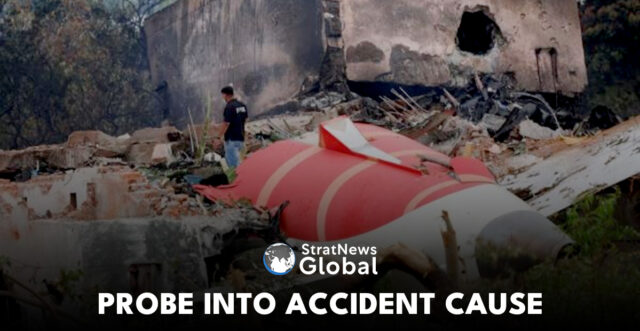A source revealed on Friday that the investigation into the Air India crash, which claimed over 240 lives, is concentrating on possible issues with the engine, flaps, and landing gear. In response, the country’s aviation regulator has directed comprehensive safety inspections across Air India’s entire Boeing 787 fleet.
The Boeing 787-8 Dreamliner with 242 people on board bound for Gatwick Airport south of London began losing height moments after take-off over a residential area of the western city of Ahmedabad and erupted in a huge fireball as it hit buildings below, CCTV footage showed.
Only one passenger survived, and local media reported that as many as 24 people on the ground were also killed as the plane crashed onto a medical college hostel during lunch hour.
It was the world’s worst aviation disaster in a decade.
Probe Into Possible Causes
On Friday, a source said that Air India and the Indian government were looking at several aspects of the crash, including issues linked to its engine thrust, flaps, and why the landing gear remained open as the plane took off and then came down within moments.
The probe is also looking at whether Air India was at fault, including on maintenance issues, the source said.
A possible bird-strike is not among the key areas of focus, the source said, adding that teams of anti-terrorism experts were part of the investigation process.
The government is considering whether it should ground the Boeing-787 fleet in the country during the probe, the source said. There was no immediate response to requests for comment on that from Air India, Boeing and the aviation ministry.
Air India has more than 30 Dreamliners that include the Boeing 787-8 and 787-9 versions. A source in Air India said there had been no communication so far from the government on the possible grounding.
Separately, India’s aviation regulator ordered Air India to conduct additional maintenance actions on its Boeing 787-8/9 aircraft equipped with GEnx engines, including “one-time check” of the take-off parameters before the departure of every flight from midnight of June 15.
The airline has also been instructed to introduce ‘flight control inspection’ – checks to ensure control systems are working properly – in transit inspection, and to conduct power assurance checks, meant to verify the engine’s ability to produce the required power, within two weeks.
One Black Box Found
The aviation ministry said that investigators and rescue workers had recovered the digital flight data recorder – one of the two black boxes on the plane – from the rooftop of the building on which the jet crashed.
There was no information on the cockpit voice recorder, the other black box, which is also crucial to the crash probe.
Indian conglomerate Tata Group took control of the formerly state-owned Air India in 2022, and merged it with Vistara – a joint venture between the group and Singapore Airlines – last year.
Investigators from India, the U.K. and the U.S. have arrived to probe the crash and Tata will be fully transparent about the findings, Tata Chairman Natarajan Chandrasekaran said.
Chandrasekaran said Tata wants to understand what happened, adding, “We don’t know right now”.
Safety Inspections
Aircraft engine maker GE Aerospace said it supports the action being taken by India’s aviation regulator for enhanced safety inspections of Air India’s 787 fleet.
“Safety is our top priority,” a GE Aerospace spokesperson said. “We are committed to providing all technical support necessary to understand the cause of this accident.”
Earlier on Friday, rescue workers had finished combing the crash site and were searching for missing people and bodies in the buildings as well as for aircraft parts that could help explain why the plane crashed soon after taking off.
Indian Prime Minister Narendra Modi was briefed by officials on the progress of rescue operations when he visited the crash site in his home state of Gujarat on Friday. Modi also met some of the injured being treated in the hospital.
“The scene of devastation is saddening,” he said in a post on X.
Thursday’s crash was the first for the Dreamliner since the wide-body jet began flying commercially in 2011, according to the Aviation Safety Network database.
The plane that crashed on Thursday flew for the first time in 2013 and was delivered to Air India in January 2014, Flightradar24 said. The passengers included 169 Indian nationals, 53 Britons, seven Portuguese and one Canadian.
(With inputs from Reuters)





